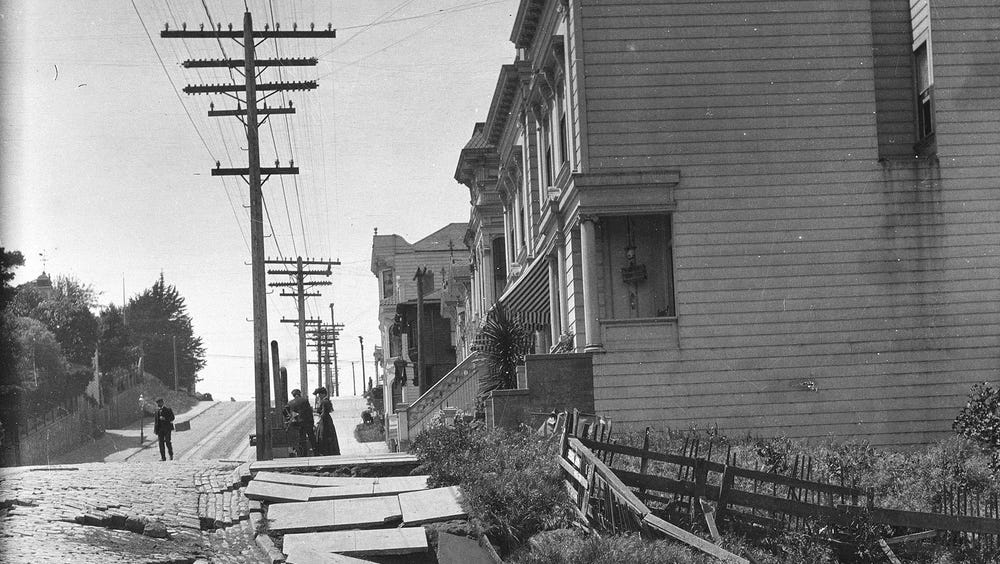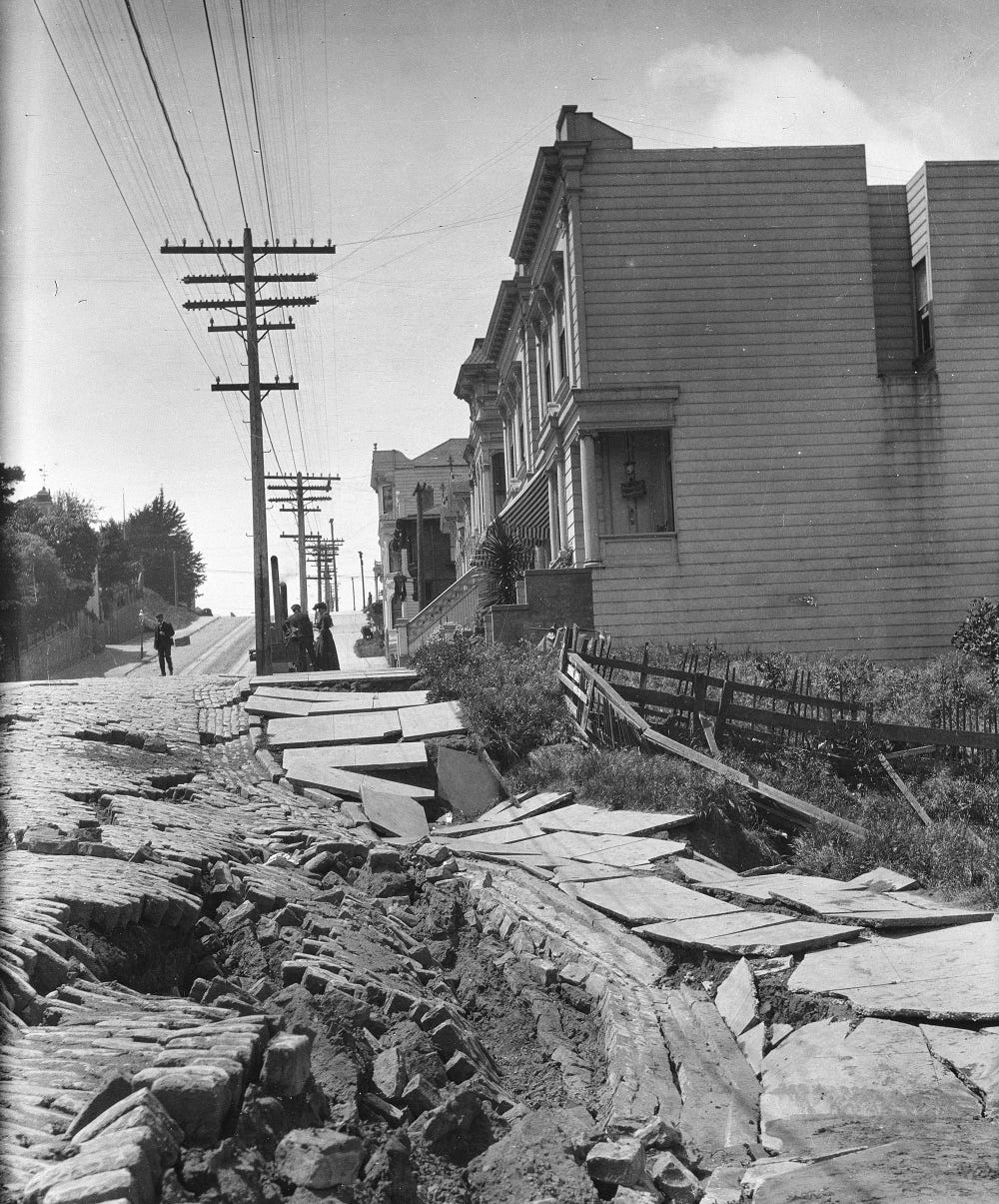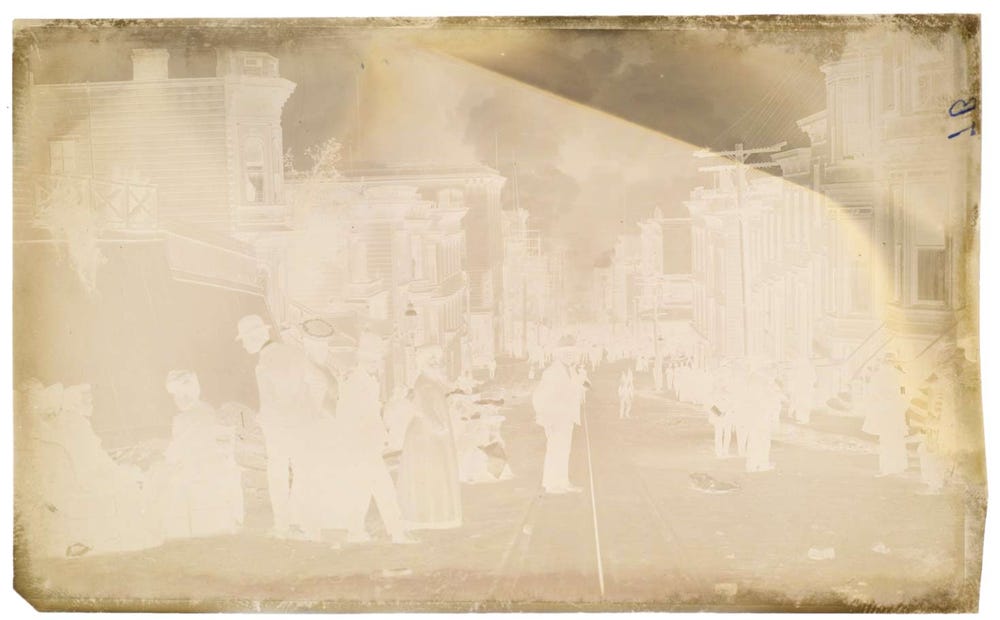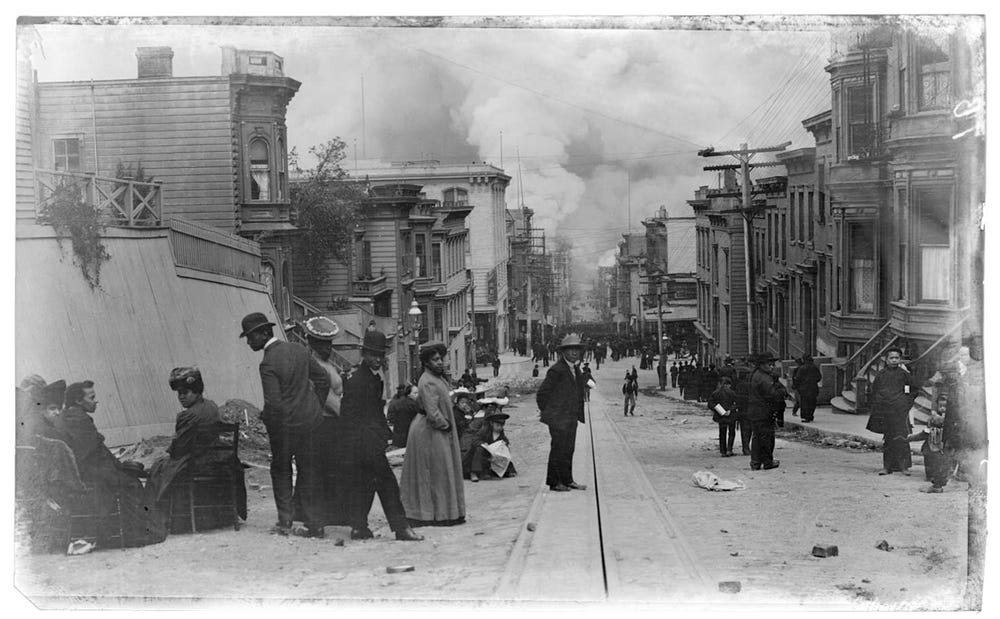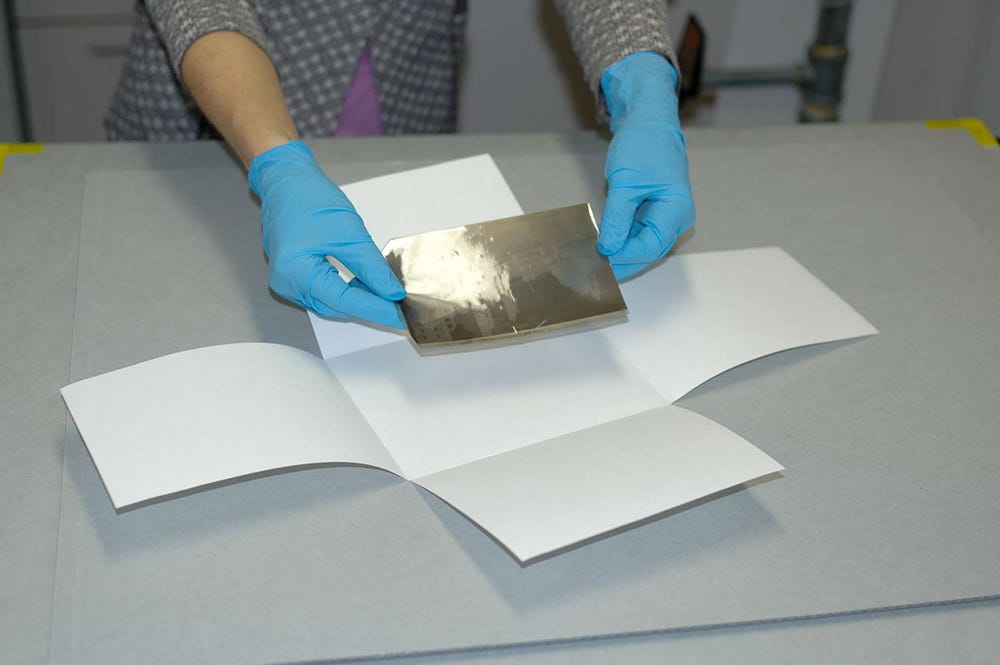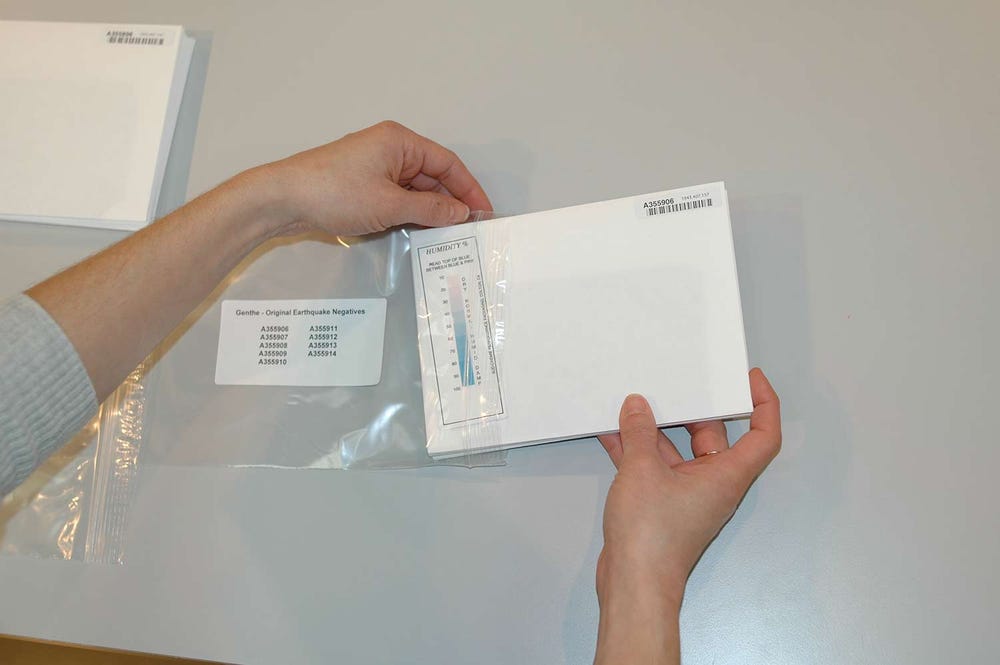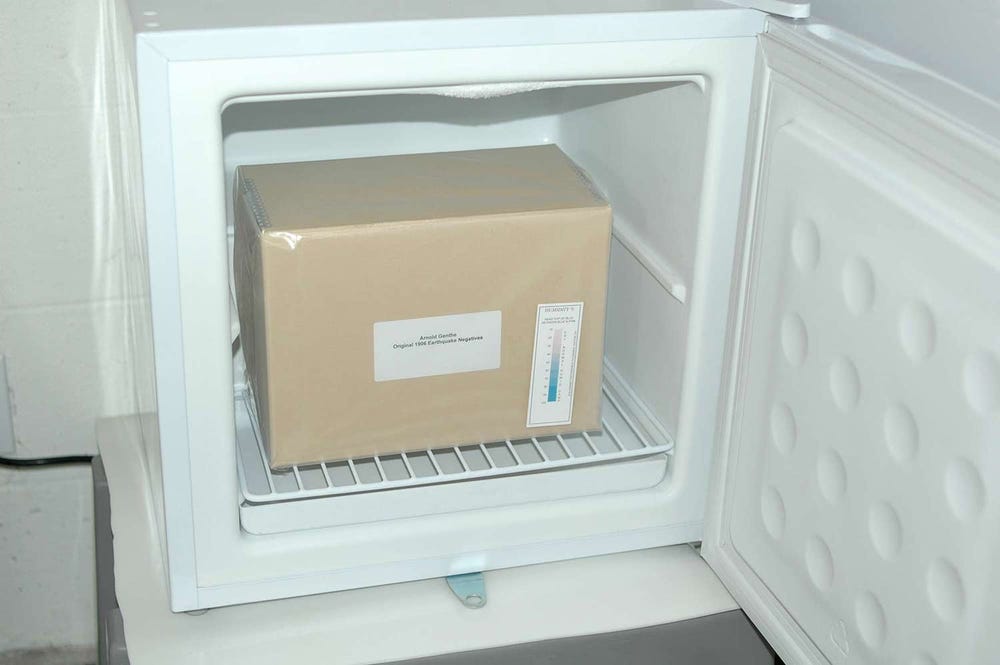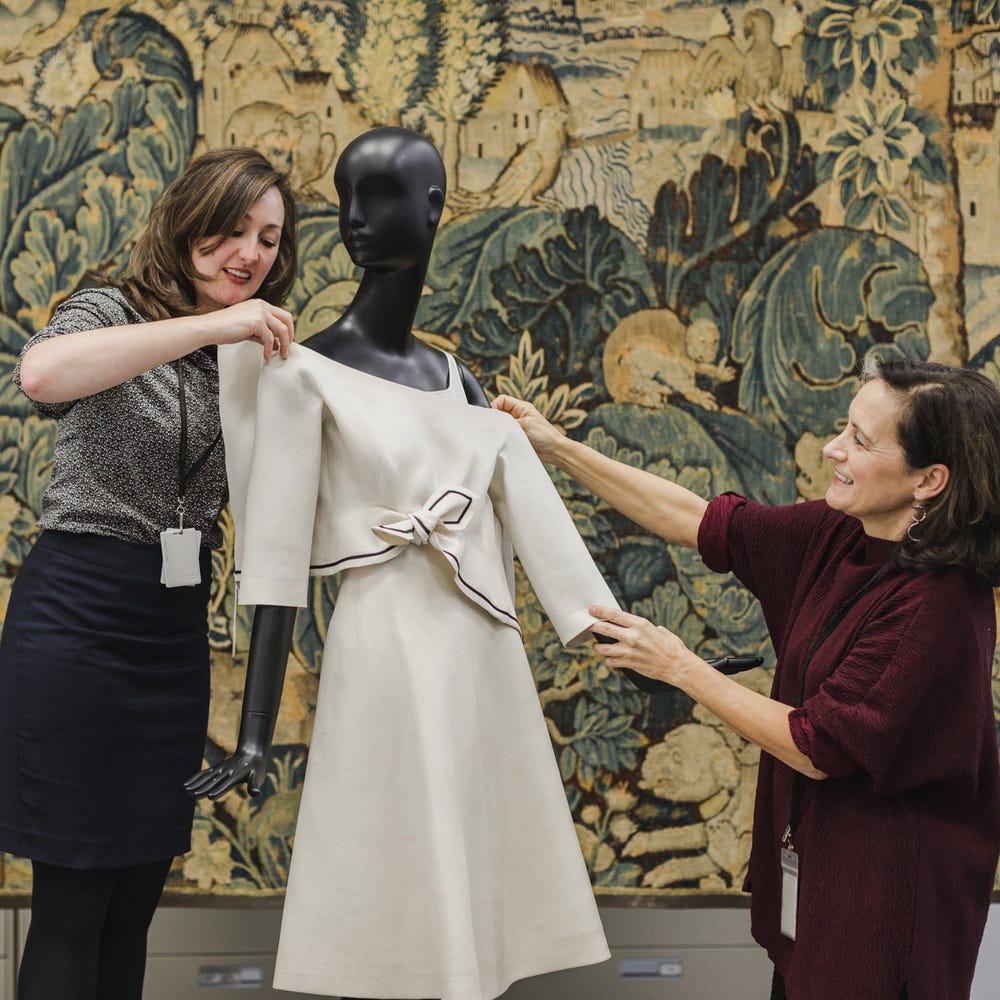The Fine Arts Museums of San Francisco is home to a unique collection of 167 film negatives taken by photographer Arnold Genthe chronicling the aftermath of the 1906 earthquake and fires. The negatives were acquired by the Legion of Honor in 1943.
Arnold Genthe, Untitled (Earthslip on San Francisco's Union Street), 1906. Cellulose nitrate negative. Fine Arts Museums of San Francisco, Museum purchase, James D. Phelan Bequest Fund. 1943.407.6.1
On the day of the earthquake Genthe, an established photographer best known for his society portraits and views of old Chinatown, took to the streets of San Francisco equipped with a handheld Kodak camera and pockets full of roll film.
The film Genthe used was composed of a gelatin silver emulsion on a thin plastic support of cellulose nitrate. Cellulose nitrate film was introduced commercially at the end of the nineteenth century and remained in use until the mid-twentieth century. Lightweight, transparent and flexible, cellulose nitrate film freed photographers from the inconveniences of its predecessors, paper and glass plate negatives.
Apocalypse 1906: Photographs of the San Francisco Earthquake by Arnold Genthe
Arnold Genthe, Untitled (Street scene of people watching approaching fire), 1906. Cellulose nitrate negative (far above) and test print (above). Fine Arts Museums of San Francisco, Museum purchase, James D. Phelan Bequest Fund. 1943.407.19
Unfortunately cellulose nitrate is unstable and will deteriorate over time. The rate of deterioration can be unpredictable and sometimes rapid. Signs of deterioration of cellulose nitrate film can include silver mirroring, yellow/amber discoloration, image loss, softening of the emulsion and shrinking and embrittlement of the film base. Though decomposition of the Genthe negatives cannot be stopped, it can be slowed down through proper housing and controlled freezer storage. Although many of the negatives appear to be already compromised by deterioration, test prints indicate that the negatives still retain amazing detail. A future project will entail digital capture and printing of these images.
Apocalypse 1906: Photographs of the San Francisco Earthquake by Arnold Genthe
Before placement in freezer storage, the Museums’ paper conservators carefully house the negatives in vapor-proof packaging. The packaging consists of several layers, providing the negatives not only with physical protection, but also a defense against fluctuations in relative humidity and potential condensation.
Decomposing cellulose nitrate can emit harmful gases including nitric acid. A fume hood provides the proper ventilation for conservators to work as they place each piece of film in its own 4-flap paper enclosure.
Apocalypse 1906: Photographs of the San Francisco Earthquake by Arnold Genthe
Heavyweight polyethylene packaging provides a moisture barrier. Relative humidity (RH) indicator strips are included so that the packages can be monitored for air leaks and unsafe changes in relative humidity. Further protection is provided with an archival storage box and an outer layer of heavyweight polyethylene.
Apocalypse 1906: Photographs of the San Francisco Earthquake by Arnold Genthe
The sealed package of negatives is placed in the freezer and allowed to equilibrate to freezing temperature. The many layers of the package ensure that this transition is slow. Once it has come down to freezing temperature the relative humidity on the indicator strip is noted. Maintenance of the freezer unit and regular monitoring of the temperature and relative humidity is important. Removal of the negatives from the freezer requires advanced planning, as the package has to be allowed to equilibrate in an insulated container to room temperature over an extended period before opening.
